A tomb unearthed in Wadi Gabbanat el-Qurud in 2022 has been determined to be the original resting place of Pharaoh Thutmose II, whose reign ended with his death in 1479 B.C.E.
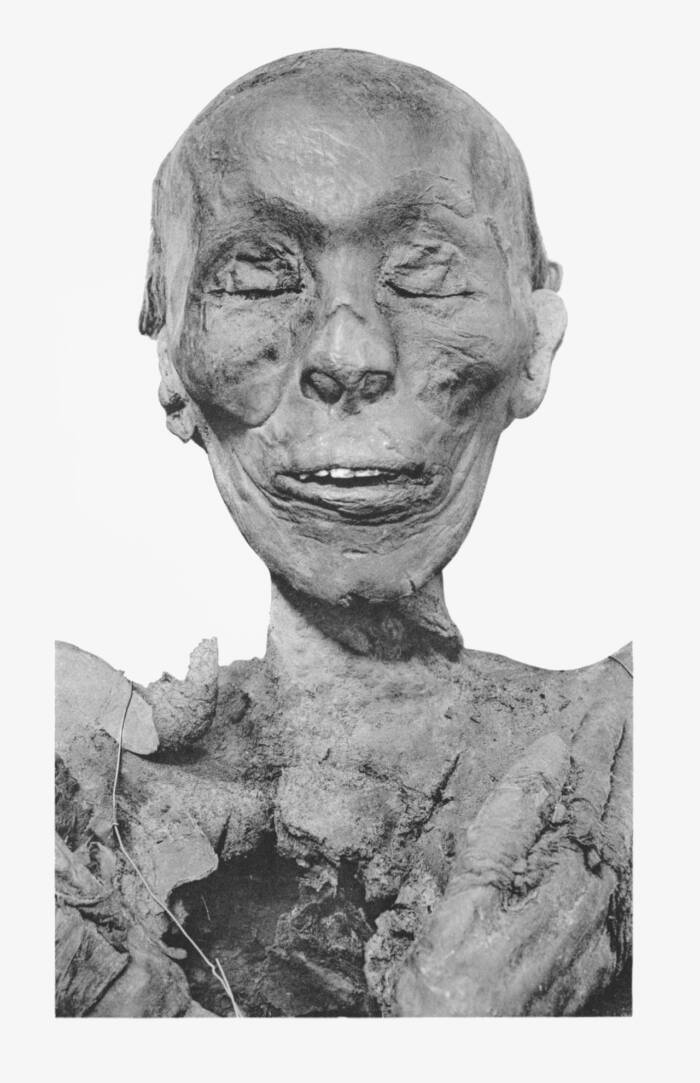
Wikimedia CommonsThe mummified head of King Thutmose II. His body was found in the late 19th century, but not in its original tomb, which has only now been identified.
Archaeologists in Egypt recently announced the discovery of the long-lost tomb of King Thutmose II — the first royal burial chamber to be unearthed since Howard Carter found the tomb of King Tutankhamun in 1922.
Although Thutmose II’s body was discovered back in 1881, it was not found in the tomb that was originally built for the late king. As the new discovery shows, Thutmose II’s original tomb was left in a poor state of preservation due to flooding soon after his death, and most of the original contents, including the king’s body, were moved to another location at some point long ago.
In fact, it was because of this that researchers initially believed the newly-found tomb might have belonged to the wife of an ancient king, as opposed to a pharaoh himself. But now, with the tomb’s true purpose uncovered, the discovery is being touted as “one of the most important archaeological breakthroughs in recent years.”
The Discovery And Identification Of Thutmose II’s Tomb

Egyptian Ministry of Antiquities and TourismThe interior of King Thutmose II’s original tomb.
In 2022, Egyptian and British archaeologists found the entrance and main passage of a tomb just a few miles west of Luxor near the Valley of the Kings. They spent two years excavating the tomb, dubbed No. C4 at the time, operating under the initial assumption that it may have belonged to an ancient king’s wife.
But, according to a statement made by Egypt’s Ministry of Tourism and Antiquities, the team soon found evidence linking the tomb directly to King Thutmose II.
Specifically, the tomb contained alabaster vessels that featured inscriptions referring to Thutmose II as the “deceased king,” as well as the name of his principal wife and half-sister, Queen Hatshepsut. Archaeologists also found sections of the Book of Amduat, a religious text associated with Egyptian royal tombs, as well as bits of plaster painted blue and adorned with yellow star motifs, likewise associated with royal tombs.
Mohamed Ismail Khaled, the secretary-general of Egypt’s Supreme Council of Antiquities, said the find is “one of the most important archaeological breakthroughs in recent years.”
“The artifacts found within the tomb provide critical insights into the history of the region and the reign of Thutmose II. Notably, this discovery includes funerary furniture belonging to the king, marking the first-ever find of such items, as no funerary furniture of Thutmose II exists in museums worldwide,” he continued.
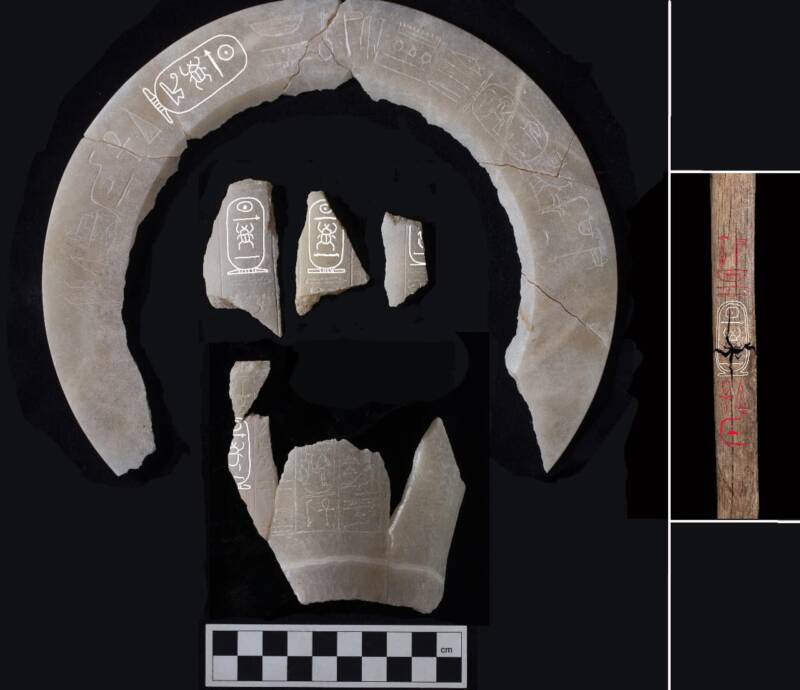
Egyptian Ministry of Antiquities and TourismVarious artifacts recovered from the tomb, with inscriptions referring to Thutmose II as the “deceased king.”
Mohamed Abdel Badi, head of the Egyptian Antiquities Sector and co-leader of the excavation, noted that the tomb was found in a poor state of preservation due to flooding that occurred shortly after the death of Thutmose II.
“Water inundated the tomb, damaging its interior and necessitating extensive restoration work by the archaeological team to recover fallen plaster fragments,” he said. “Preliminary studies suggest that the tomb’s original contents were relocated to another site during ancient times after the flooding.”
Given that Thutmose II’s body was discovered in a different location, at an archaeological site known as the Deir el-Bahari Cachette, Badi’s theory seems likely. As for how the tomb’s contents were moved, Dr. Piers Latherland, head of the British side of the mission, offered an explanation.

Egyptian Ministry of Antiquities and TourismWater damage and recovered plaster bits in the tomb.
Latherland noted that the tomb’s simple layout was something of a prototype for later royal tombs of the 18th Dynasty: “It features a plastered corridor leading to the burial chamber, with the floor of the corridor elevated approximately 1.4 meters (4.59 feet) above the burial chamber’s floor. The elevated corridor is believed to have been used to relocate the tomb’s contents, including the mummy of Thutmose II, following the flooding.”
Latherland added that the archaeological excavation of the site will continue for at least two more years as the team hopes to uncover more of the region’s ancient secrets.
The Little-Known Story Of King Thutmose II
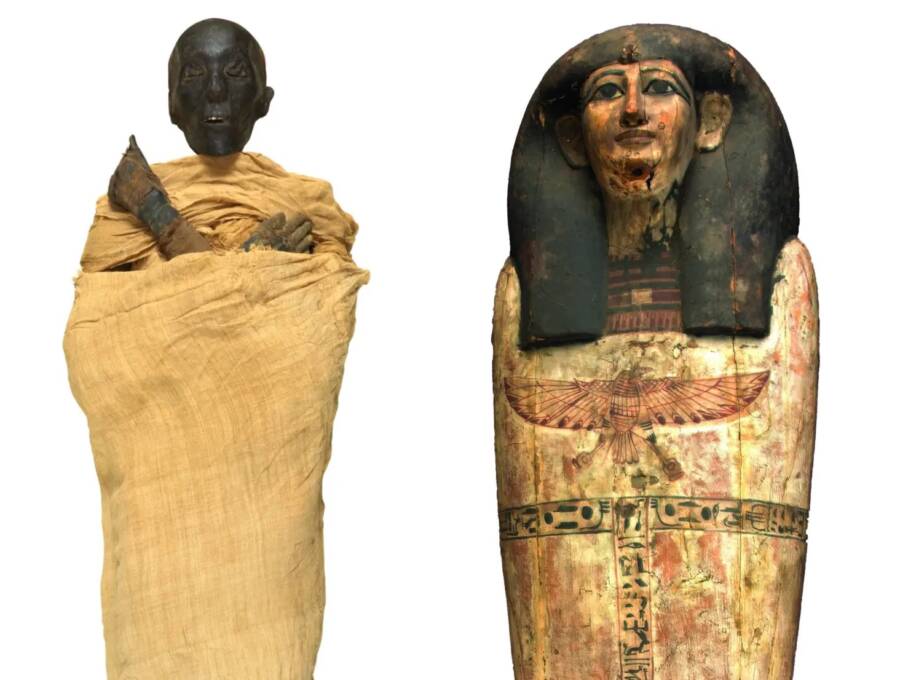
National Museum of Egyptian CivilizationThe mummified remains of Thutmose II and the sarcophagus in which they were found.
Thutmose II was the fourth pharaoh of Egypt’s 18th Dynasty, ascending to the throne around 1493 B.C.E. The exact length of his reign is debated, however, with some historians suggesting it could have been anywhere between three and 18 years.
He was born to King Thutmose I and a secondary wife, Mutnofret, securing his own position as his father’s successor by marrying his half-sister Hatshepsut, the daughter of Thutmose I and his principal queen Ahmose. Hatshepsut and Thutmose II had one daughter, Neferure, and the king fathered his own successor, Thutmose III, with another woman of his harem.
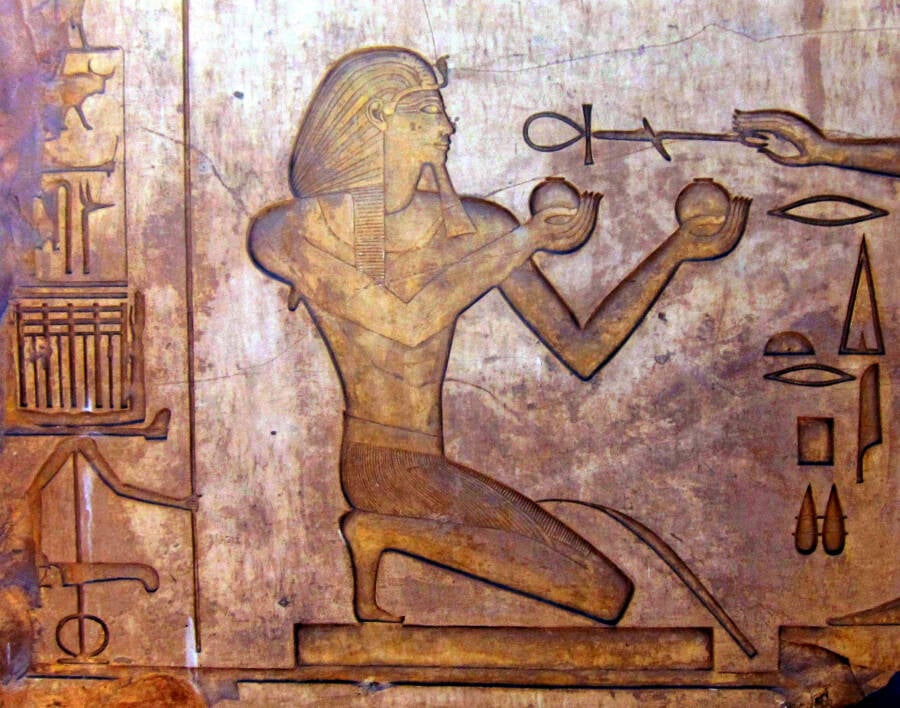
Wikimedia CommonsA relief of Thutmose II.
During his short reign over ancient Egypt, Thutmose II achieved some fairly modest accomplishments, including minor military campaigns and a few architectural projects. He quelled a rebellion in Nubia, dispatching his army to suppress the uprising and maintain control over the southern territories, and also addressed unrest in the Levant and led a campaign against the Shasu Bedouins in the Sinai Peninsula.
He commissioned a limestone gateway at Karnak, which was later dismantled and repurposed by subsequent pharaohs. Other construction attributed to his reign include structures at Semna, Kumma, and Elephantine. However, many of his monuments were later usurped or modified by Hatshepsut, whose reign greatly overshadowed her late husband’s.
After Thutmose II’s death, Hatshepsut assumed the role of regent for the young Thutmose III, though she eventually declared herself pharaoh and ruled effectively for more than two decades. Her own legacy was then scrubbed from much of the historical record by Thutmose III and his successor Amenhotep II, likely to undermine much of what the queen had achieved.
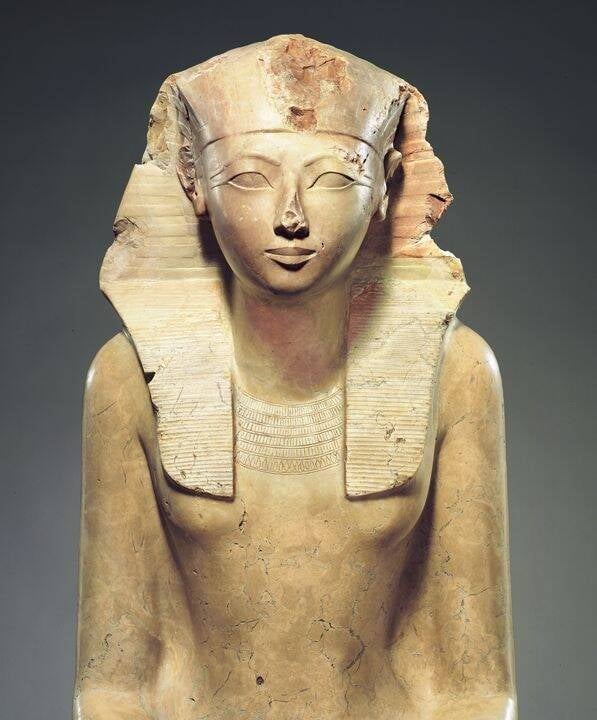
Wikimedia CommonsA statue of Queen Hatshepsut.
Unfortunately, these efforts also inadvertently diminished Thutmose II’s historical prominence, leaving many questions about the ancient king’s reign. Even the circumstances surrounding his death circa 1479 B.C.E. remain a mystery.
When Thutmose II’s body was discovered in 1881, there were certain indications that he had likely suffered from significant health issues. His body exhibited signs of a skin disease, with patches and scars, and he appeared to be physically frail. By most estimations, he died in his early 30s.
Now, at least, archaeologists can say with certainty where Thutmose II was originally buried — and perhaps more pieces of this ancient puzzle will soon come together.
After learning about the discovery of King Thutmose II’s tomb, learn all about the incredible history of King Tut’s mask. Then, read about the alleged King Tut Curse that supposedly killed nine people.





